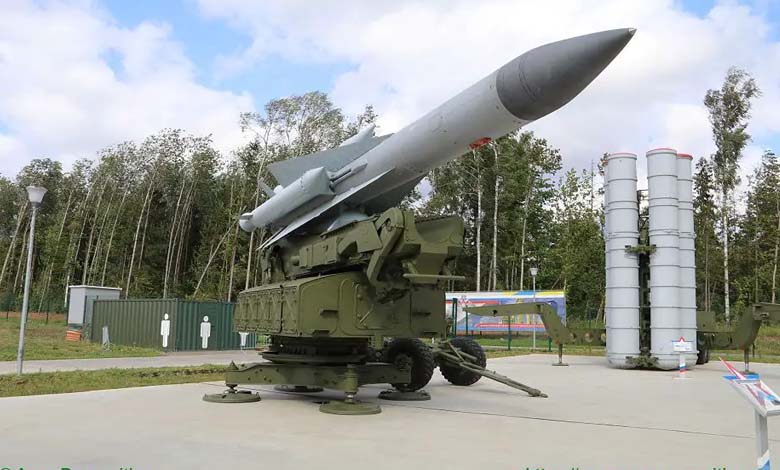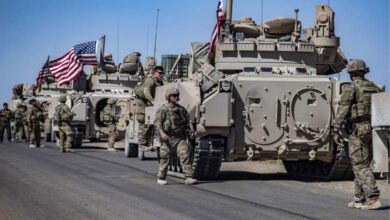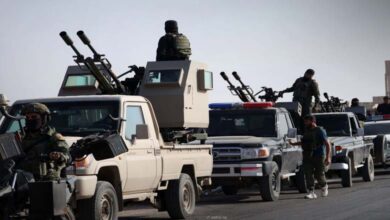The Soviet Monster S-200: Ukraine Reawakens Ghosts of the Past to Haunt Russia

The war in Ukraine has showcased a remarkable level of military innovation and ingenuity. Despite the emergence of new weaponry, older systems continue to prove effective on the battlefield.
-
Ukraine War: Kyiv Hints at Concessions in a Plan Full of Obstacles
-
Ukraine Settlement: Trump’s Plan Clashes with Kyiv’s Stubbornness and Moscow’s Missiles
Ukraine has successfully repurposed parts of its Soviet-era arsenal into modern combat beasts, demonstrating creative adaptability and underscoring the importance of localized defense capabilities in modern warfare.
A prime example is the Soviet S-200 missile system, known by NATO as the SA-5 “Gammon”—a long-range, high-altitude surface-to-air missile system developed during the Cold War, now experiencing a resurgence in the Ukraine conflict, according to The National Interest, quoting war correspondent David Axe.
-
An American Historical Solution for the Ukraine Crisis: The Post-War Berlin Model
-
Behind the Fronts: An Image Sparks a Symbolic War between Russia and Ukraine
On his Telegram channel, Axe reported that the first confirmed S-200 strike, on July 9, 2023, likely hit an industrial facility in the Bryansk region of Russia.
A second confirmed strike occurred 17 days later, with a 5V28 missile crashing into Taganrog, a Russian Black Sea coastal city just 20 miles from the Ukrainian border and 100 miles from the frontline.
These strikes are a powerful example of how Ukraine is redefining military expectations for legacy weapons like the S-200, a system considered antiquated by modern standards.
-
Appointment of a New Chief of Staff: Ukraine’s Attempt to Regain Military Momentum
-
Secret Document Reveals… What Does Russia Want from Ukraine?
A Giant Reborn
The 5V28 missile, launched from a fixed launcher, weighs 8 tons and can carry a massive 500-pound warhead. Although its prime was in the 1960s, it has become more useful to Ukraine than many NATO-supplied alternatives, due to its familiarity and largely local supply chain.
Originally designed to take down B-52 Stratofortress bombers, the S-200 was intended to intercept large targets over long ranges and at altitudes higher than its predecessor, the S-75.
The system was not designed for mobility or rapid deployment. Instead, it was developed by the Soviets as a fixed or semi-fixed defense platform for strategic, high-value targets.
-
Ukraine and Russia in the “State of the Union”: A Sign of Peace and Readiness for Dialogue
-
On the Anniversary of the War in Ukraine… Russia Fails to Understand Trump’s Plan and Sets Its Negotiation Objective
It comprises multiple core components: missile batteries, several launchers, target acquisition and tracking radars, and a full command-and-control infrastructure.
Its main missile, the V-880 (or 5V21 in later versions), is a two-stage rocket equipped with a solid-fuel booster and a liquid-fuel sustainer.
Depending on the variant, it can hit targets at ranges between 93 and 186 miles, making it one of the longest-range SAMs of its time.
-
Third Anniversary of the War: Ukraine Caught Between Frontline Anxiety and Political Concerns
-
“Strategic ‘Toretsk’ in Russian Hands… Ukraine Faces Supply Line Crisis”
It can also engage aerial targets at altitudes up to 131,000 feet, more than enough to reach any aircraft in operation.
The S-200 can reach speeds of up to Mach 4, allowing it to intercept high-speed threats. Its 500-pound high-explosive warhead, equipped with a proximity fuse, is highly lethal against airborne targets.
The system uses semi-active radar homing, relying on ground-based radars like the 5N62 (Square Pair) to illuminate targets. Fire control radars provide precise tracking, while early warning radars such as the P-14 (Tall King) help in target detection.
According to David Axe, the unexpected accuracy of Ukraine’s repurposed S-200s in a surface-to-surface role suggests that Kyiv’s engineers may have integrated more advanced targeting systems.
-
The “gases” of the war in Ukraine equal the emissions of 120 million cars in one year
-
Ukraine’s Bell Rings across Europe: Cooperation to Build a Defense Industrial Base












